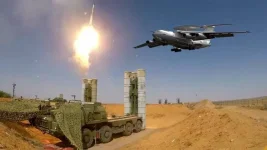- Views: 3K
- Replies: 11
On May 10, 2025, the Indian Air Force (IAF) executed a successful precision strike against Pakistan Air Force (PAF) Base Bholari, resulting in the destruction of a SAAB 2000 Erieye Airborne Early Warning and Control (AEW&C) aircraft.
The operation, reportedly part of India's ongoing retaliatory actions codenamed 'Operation Sindoor2', has highlighted a significant tactical lapse by the PAF, termed by some observers as the "Bholari Catastrophe," which left a high-value military asset exposed.
The Erieye system, mounted on a SAAB 2000 aircraft, is crucial for airborne surveillance and command, providing an extensive view of airspace.
Intelligence reports, including social media posts from user Hukum (@hukum2082) on X (formerly Twitter), indicate that the IAF’s Integrated Air Command and Control System (IACCS) in the western sector had been meticulously tracking all airborne SAAB 2000 Erieye aircraft operating within Pakistani airspace, designating them as priority targets.
Around midday on May 10, an Erieye aircraft from the PAF’s No.3 Squadron, using the call sign “Overlord 3,” was observed landing at Bholari after completing an extended mission.
This particular aircraft, usually stationed at PAC Kamra—a major hub for PAF's aviation operations—had been deployed to PAF Base Bholari in Sindh province as part of Pakistan's 'Mission Bunyan-ul-Marsoos.' This mission was initiated as a response to India's operations following the April 22 terror attack in Pahalgam, which resulted in 26 civilian fatalities.
The critical error occurred when PAF personnel moved the Erieye aircraft into a hangar, ostensibly to shield it from surveillance. Sources suggest that data was being collected from the aircraft by officers inside the hangar, while technical staff were preparing it for its subsequent flight. Standard procedure during periods of heightened conflict would typically involve rapid refuelling and immediate redeployment ('hot refuelling and takeoff').
However, the decision to keep the aircraft grounded within the hangar provided the IAF with a crucial opportunity to launch an attack. An IAF Sukhoi Su-30 MKI multirole fighter jet carried out the strike.
It is believed a precision-guided air-launched cruise missile (ALCM), possibly a BrahMos, was used. This assessment is supported by satellite imagery from the Indian firm KawaSpace, which shows severe damage to a hangar at the Bholari airbase. The BrahMos is a supersonic cruise missile known for its high precision.
The attack led to the complete destruction of the Erieye AEW&C aircraft, a vital component of Pakistan’s airborne surveillance and battle management capabilities.
Significant casualties were also reported, with Squadron Leader Usman Yousaf and at least four other PAF personnel confirmed killed. There are unconfirmed reports of additional injuries.
The loss of this aircraft, one of nine Erieye systems in the PAF inventory, significantly impairs Pakistan's capacity to monitor aerial activities and coordinate its air operations. This is particularly critical as the PAF is reportedly contending with ongoing Indian strikes on other bases, including Nur Khan, Sargodha, and Jacobabad, under 'Operation Sindoor'.
This incident at Bholari underscores a major tactical misjudgment by the PAF in failing to ensure the safety of one of its most important aerial platforms during an active air campaign.
The IAF's strategy appears focused on degrading Pakistan's command, control, communications, computers, intelligence, surveillance, and reconnaissance (C4ISR) capabilities, reflecting the changing dynamics of modern warfare between the two nuclear-armed neighbours.
As tensions persist, the destruction of the Erieye at Bholari serves as a significant operational setback for the Pakistan Air Force and a stark illustration of the high stakes involved in the current conflict.

